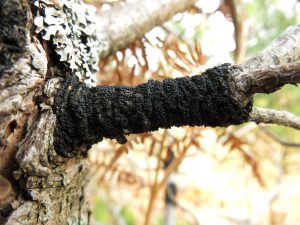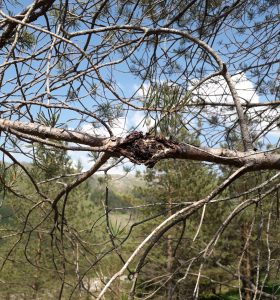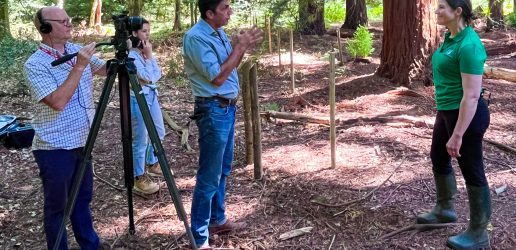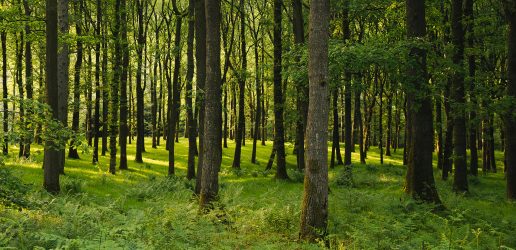A previously rare fungus known as Curreya pithyophila is now infesting shoots and branches of Scots pine in an apparently symbiotic association with the native adelgid species, Pineus pini. So far, we have many records of it from across Scotland, however none from Wales and just one from England (Devon).
Curreya pithyophila colonises the outer bark of Scots pine as a black stroma on which are embedded many hundreds of fruiting bodies which exude the fungal spores. The fungus is frequently observed encircling young branches at shoot junctions. Encased beneath the fungal stroma at its margins are colonies of adelgid nymphs which feed on the phloem causing damage to host tissues.


Affected Scots pine also exhibits abundant blackened shoot and branch cankers. The primary cause of these cankers may be adelgid feeding in association with C. pithyophila, with wound sites subsequently colonised by a native fungal species Crumenulopsis sororia which causes the black, slowly expanding cankers that can be so disfiguring.


Some Scots pines show high levels of infestation and weak or suppressed trees can exhibit severe dieback, but the most common symptom is crown thinning and dieback of shoots and branches in the lower crown.

Curreya pithyophila and its association with adelgids has been described occasionally from the UK, continental Europe and North America on various conifer species since the 1800s, yet it remains obscure in the literature. We are working to understand the possible reasons for this current, widespread infestation on Scots pine in Scotland.
We are very interested in any new findings, particularly in England and Wales, so please report your findings to TreeAlert.

Dr Gail Atkinson was interviewed by the BBC’s Climate Editor, Justin Rowlatt, as part of a news item on climate change and the launch of latest Met Office State of the UK Climate Report.

The British Woodlands Survey, 2025, which focuses on resilience launches.

Forest Research has released the results of the Public Opinion of Forestry Survey 2025 for England and the UK, Scotland and Wales.

Dr Gail Atkinson was interviewed by the BBC’s Climate Editor, Justin Rowlatt, as part of a news item on climate change and the launch of latest Met Office State of the UK Climate Report.

The British Woodlands Survey, 2025, which focuses on resilience launches.

Forest Research has released the results of the Public Opinion of Forestry Survey 2025 for England and the UK, Scotland and Wales.